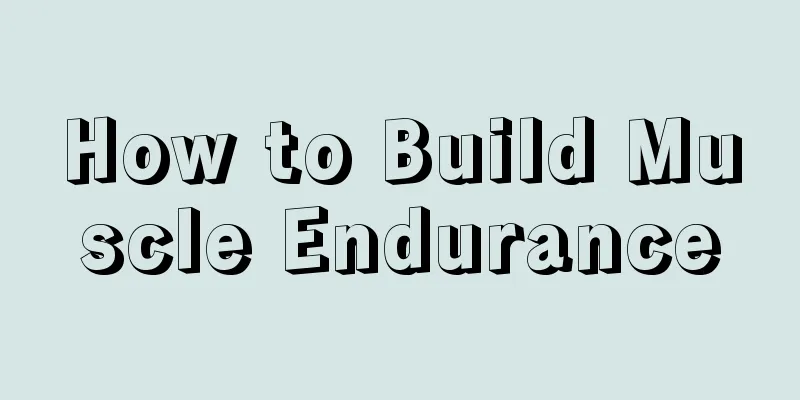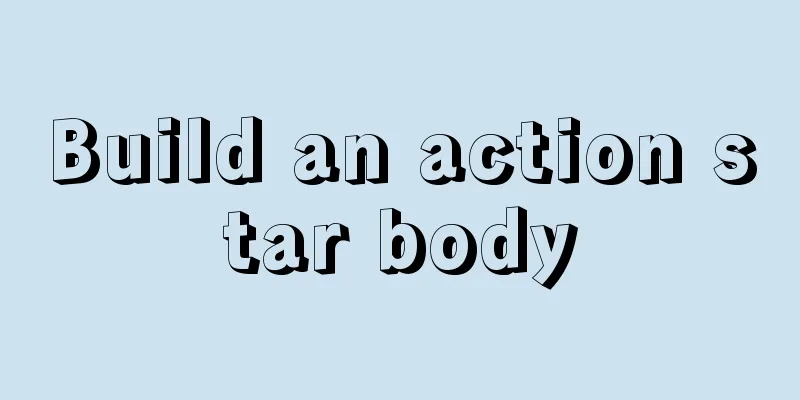How to Build Muscle Endurance

|
In the process of daily exercise and fitness, if you want to improve muscle endurance, you will focus on certain aspects during the exercise, and the intensity of the exercise will increase. For example, the weight of the exercise should also be increased. You should do heavy weights and low repetitions, slow speed, high density, etc. Only in this way can you improve and enhance muscle endurance. In addition to exercise, your daily diet should also be strengthened, so as to enhance muscle endurance. How to Build Muscle Endurance 1. Heavy weight, low reps: In bodybuilding theory, RM is used to represent the maximum number of repetitions that can be done continuously with a certain load. For example, if an athlete can only lift a weight 5 times in a row, then that weight is his 5RM. Studies have shown that: 1-5RM load training can make muscles thicker and develop strength and speed; 6-10RM load training can make muscles thicker and improve strength and speed, but the increase in endurance is not obvious; 10-15RM load training does not significantly thicken muscle fibers, but strength, speed and endurance are improved; 30RM load training increases the number of capillaries in the muscles and improves endurance, but the improvement in strength and speed is not obvious. It can be seen that a load weight of 5-10RM is suitable for bodybuilding training to increase muscle volume. 2. Multiple groups:Whenever you remember to exercise, you do 2 to 3 sets. This is actually a waste of time and will not help you build muscle. You must set aside 60 to 90 minutes to focus on training a certain part of your body, and do 8 to 10 sets of each movement to fully stimulate the muscles. At the same time, the muscles need a longer recovery time. Keep doing this until the muscles are saturated. The "saturation" is something you need to feel yourself. The appropriate standards are: soreness, swelling, numbness, firmness, fullness, expansion, and obvious thickness of the muscles. 3. Long displacement: Whether it's rowing, bench press, push-ups, or curls, you must first lower the dumbbells as low as possible to fully stretch your muscles, and then lift them as high as possible. This one sometimes conflicts with “continuous tension”. The solution is to quickly pass through the “locked” state. However, I do not deny the role of heavy weight half-range movements. 4. Slow speed: Lift up slowly and then lower it slowly to stimulate the muscles more deeply. In particular, when lowering the dumbbells, you should control the speed and do concession exercises to fully stimulate the muscles. Many people ignore concession exercises, and consider lifting the dumbbells as completing the task, and then put them down quickly, wasting a great opportunity to increase muscle size. 5. High Density:"Density" refers to the rest time between sets. Resting for only 1 minute or less is called high density. To increase muscle mass quickly, you need to rest less and stimulate the muscles frequently. “Multiple groups” are also based on “high density”. When exercising, you should focus on training as if you were fighting a battle and not think about anything else. 6. Consistent thoughts and actions: The work of muscles is controlled by nerves. Concentrating your attention can mobilize more muscle fibers to participate in the work. When practicing a certain movement, you should consciously align your mind and movement, that is, think about which muscles are working when you practice. For example: when doing standing curls, you should lower your head and look at your arms with your eyes to see your biceps slowly contracting. 7. Peak Contraction: This is the main rule for achieving very defined muscles. It requires that when a certain movement reaches the most tense position of muscle contraction, maintain this most tense state of contraction, do static exercises, and then slowly return to the starting position of the movement. My method is to count from 1 to 6 when the muscles feel the most tense, and then release them. 8. Continuous tension: The muscle should be kept under constant tension throughout the entire set, never letting it relax (not in a "locked out" position) either at the beginning or the end of the movement, always working to complete exhaustion. |
<<: Does muscle soreness during fitness mean muscle growth?
>>: How to reduce body fat and increase muscle
Recommend
How can I train my abdominal muscles?
How can we exercise to develop abdominal muscles?...
What are some tips for sports health?
In life, more and more people are beginning to pa...
What should I wear for yoga?
What should we wear when practicing yoga? If it i...
What is the most effective way to lose waist size?
Many women know that doing yoga is a good way to ...
Can abdominal muscle training help you lose weight?
I believe everyone knows that aerobic exercise ca...
What is your winter fitness plan?
Many women do fitness to shape their bodies and l...
How to exercise the muscles of the body
Many people have a misunderstanding that they wan...
Can practicing yoga reduce belly fat?
Nowadays, many office workers often have excess f...
Can climbing a mountain at night help you lose weight?
There are so many ways to lose weight, and the ef...
How to do the meridian-clearing bodybuilding exercise?
There are many types of aerobics, for example, so...
After the Chinese New Year, exercise and massage are the most effective
"When the weather is relatively warm, more w...
How to slim down your thighs with fitness
If you can have a pair of long and slender legs, ...
How to walk to lose weight?
Although many people know that walking can help l...
How to do boxing footwork training
Boxing is a combat sport. As it is a strength spo...
What are the yoga exercises for weight loss before going to bed?
Practicing yoga has many benefits for women, but ...









